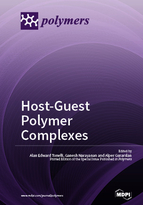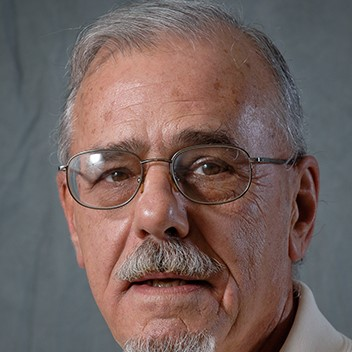Host-Guest Polymer Complexes
A special issue of Polymers (ISSN 2073-4360).
Deadline for manuscript submissions: closed (30 November 2017) | Viewed by 67179
Special Issue Editors
Interests: characterization of polymer microstructures; conformations; properties; NMR; kerr-effects; nanostructuring polymers through host–guest complex formation
Special Issues, Collections and Topics in MDPI journals
Interests: cyclodextrins; biomaterials; synthetic degradable polymers; analytical characterization; micro and nanofibers; orthopaedic tissue regeneration
Special Issues, Collections and Topics in MDPI journals
Interests: polymer structure and properties; composites; flexible and stretchable electronics; 2-dimensional materials; cylodextrin; urea; biomaterials
Special Issues, Collections and Topics in MDPI journals
Special Issue Information
Dear Colleagues,
I enthusiastically invite you to contribute to a Special Issue of the open-access journal Polymers, focusing on “Host–Guest Polymer Complexes”, which I and two of my former PhD students, Drs. Alper Gurarslan and Ganesh Narayanan, are editing. We hope to include papers describing the syntheses, characterization, and use of host–guest polymer complexes, as well as factors that are important to their formation. Submissions that describe unusual and unique applications of host–guest polymer complexes using hosts other than traditional ones: cyclodextrins, cucurbiturils, urea, thiourea, cyclotriphosphazines, etc., are particularly encouraged.
I hope that you accept our invitation to make this Special Issue one that will introduce, effectively summarize, and increase interest in this important area of polymer science.
Prof. Dr. Alan Edward Tonelli
Guest Editor
Dr. Alper Gurarslan
Dr. Ganesh Narayanan
Co-Guest Editor
Manuscript Submission Information
Manuscripts should be submitted online at www.mdpi.com by registering and logging in to this website. Once you are registered, click here to go to the submission form. Manuscripts can be submitted until the deadline. All submissions that pass pre-check are peer-reviewed. Accepted papers will be published continuously in the journal (as soon as accepted) and will be listed together on the special issue website. Research articles, review articles as well as short communications are invited. For planned papers, a title and short abstract (about 100 words) can be sent to the Editorial Office for announcement on this website.
Submitted manuscripts should not have been published previously, nor be under consideration for publication elsewhere (except conference proceedings papers). All manuscripts are thoroughly refereed through a single-blind peer-review process. A guide for authors and other relevant information for submission of manuscripts is available on the Instructions for Authors page. Polymers is an international peer-reviewed open access semimonthly journal published by MDPI.
Please visit the Instructions for Authors page before submitting a manuscript. The Article Processing Charge (APC) for publication in this open access journal is 2700 CHF (Swiss Francs). Submitted papers should be well formatted and use good English. Authors may use MDPI's English editing service prior to publication or during author revisions.
Keywords
- Host Polymers
- Guest Molecules
- Host-Guest Polymer Complexes
- Polymer Inclusion Complexes
- Non-included Polymer Complexes
- Formation of Polymer Complexes
- Characterization of Polymer Complexes
- Application of Polymer Complexes








